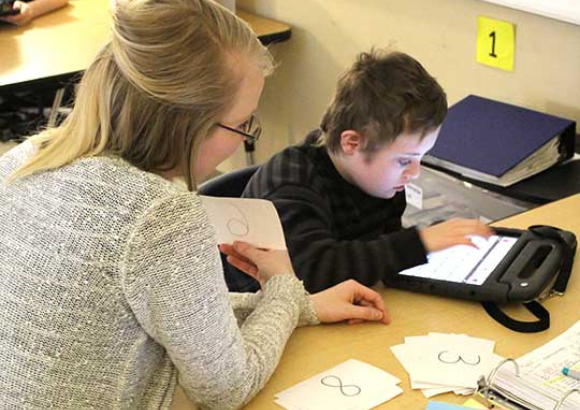Applied Behavior Analysis (ABA) is an evidenced based method used in our ABA focused schools and classrooms. ABA involves the systematic application of interventions aimed at improving socially significant behaviors. The core goal of ABA techniques is to delve into the underlying reasons for behaviors when addressing various social issues, including facilitating individuals' learning processes. A variety of techniques and interventions may be incorporated to teach target skills in all areas to include, but not limited to verbal behavior, functional communication, augmentative communication, discrete trial training, picture communication, visual and auditory strategies, task analysis, incidental teaching, and sensory strategies. These methods are founded on the research based, scientific principles of operant conditioning to build communication, social skills, academic, vocational and independent living skills as well as reduce inappropriate behavior.
For over 15 years, Rivermont Schools has been dedicated to providing students with autism with services grounded in the principles of ABA. Within our schools, we have a team of professionals, including Board Certified Behavior Analysts and Board-Certified Assistant Behavior Analysts, who specialize in conducting Functional Behavior Assessments, developing Individualized Behavior Support Plans, and collaborating with the multi-disciplinary IEP team to seamlessly integrate behavior intervention strategies throughout the academic day. Each student’s curriculum is designed based on their Individualized Education Plan (IEP). The ABA focused schools and classrooms employ a structure focused on teaching small, measurable units of behavior. The model is a success-oriented model based on positive reinforcement.

About ABA
Applied Behavior Analysis (ABA) is a versatile approach employed across diverse age groups, populations, and settings, addressing various social concerns such as education, healthcare, addiction, depression, and behaviors associated with autism. Years of scientific research strongly support the effectiveness of ABA, with endorsement from esteemed organizations like the U.S. Surgeon General, the American Academy of Pediatrics, and the American Academy of Neurology. Rivermont Schools' dedicated team is devoted to identifying behaviors that notably affect a student's ability to learn, play, and actively participate in society.
Functional Behavior Assessment and Behavior Support Plan
In our ABA program at Rivermont Schools, we adhere to the foundational principles of Applied Behavior Analysis. Upon a student's enrollment, a thorough Functional Behavior Assessment (FBA) is conducted to understand the function of their behavior. Our committed Behavior Analysts conduct individualized FBAs for each student, meticulously analyzing the data to create individualized Behavior Support Plans (BSP). These plans comprehensively detail the functions of problematic behaviors, identify behaviors to reinforce or reduce, and outline strategies to teach appropriate replacement behaviors. By incorporating generalization procedures and promoting independence, students develop essential skills and reduce reliance on prompts.

Terms You Will Hear
-
Antecedent
What happens immediately before a behavior. This could be something around you, such as a loud noise before you jumped, or someone else’s actions such as smiling at you before you giggled.
-
Behavior
Anything a person does that can be observed and measured. Behaviors are defined, measured and analyzed in the context of what happened before and after their occurrence.
-
Consequence
Whatever occurs in the environment immediately after the behavior. This is not how we traditionally think of consequences being a punishment. A consequence could be very positive, such as receiving a high-five after finishing your work.
-
Data
Facts and information gathered for analysis. Data could include counts of how often a child raised their hand in class, or how long someone held their breath.
-
Function of the Behavior
All behaviors occur for a reason. Determining the function of a behavior is discovering why a behavior occurred. Functions could include escaping an unpleasant job, trying to get someone’s attention, wanting to be left alone, and others.
-
Functional Behavior Assessment (FBA)
This is the process by which behavioral interventions are created. An FBA determines the function (or the reason) for a behavior and then creates an intervention based on that function.
-
Reinforcement
Providing something that will maintain or increase a specific behavior. If you have been at work for a week and you get your paycheck (the reinforcer), you are more likely to go back to work next week.
-
Replacement Behavior
A behavior chosen as a more socially acceptable alternative to current behavior. For example: Instead of shouting out loud during math class, the team teaches the replacement behavior of raising a hand before talking.


